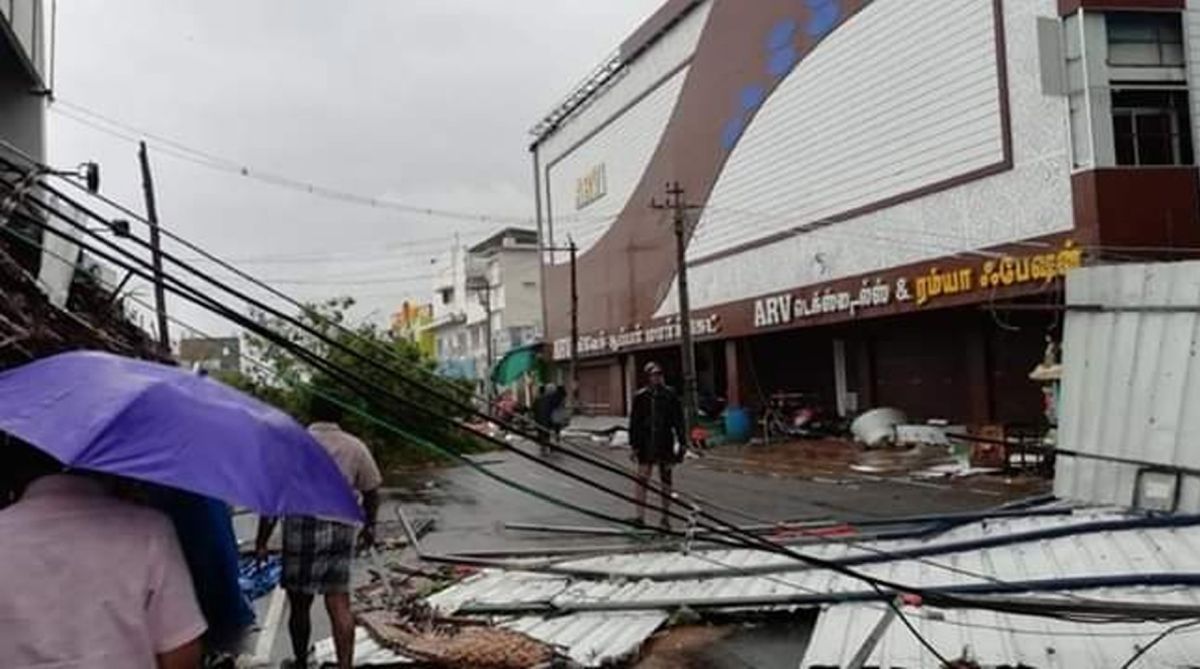Rahul slams Modi for criticizing Cong manifesto; calls it ‘revolutionary’
The MP further said, "No power can stop caste census from taking place."
Neither Prime Minister Narendra Modi nor any of his senior colleagues felt the need to make at least an aerial survey to see the havoc caused by Gaja.

(Photo: IANS)
Cyclone Gaja, that hit coastal Tamil Nadu on 16 November, caused more damage than the Tsunami of December 2004, and yet the response of the Union government has been one of benign neglect.
Neither Prime Minister Narendra Modi nor any of his senior colleagues felt the need to make at least an aerial survey to see the havoc caused by Gaja. A seven-member inter-ministerial team led by an official from the Union home ministry made a pro forma visit to the cyclone-affected districts and gave a good certificate to Tamil Nadu Chief Minister Edappadi Palaniswamy for undertaking “precautionary measures” and left.
Measures like timely evacuation of people from vulnerable areas helped keep the death toll below 100 in spite of its high velocity. According to Revenue minister RB Udhayakumar, the damage wrought by Gaja was “beyond our imagination,” and that it would take years for the people to get back on their feet. Thousands of roadside trees were uprooted blocking traffic for days.
Advertisement
About 30,900 electricity poles were damaged disrupting power and water supply in the affected districts. While relief materials from philanthropists and corporate entities poured in, the absence of local, national and international voluntary organisations hampered distribution. Two days after the cyclone, heavy rains followed inundating agricultural fields in the Cauvery delta region.
The official machinery worked dutifully but it was inadequate considering the magnitude of the problem. Against an estimated loss of more than Rs 45,000 crore, the State government sought from the Centre an immediate release of Rs 15,000 crore for restoration and rehabilitation. The Centre has approved the release of Rs 353.70 crore under the Tamil Nadu Disaster Response Fund and released Rs 200 crore as first instalment.
The Cauvery delta is the most fertile region in the state. The cyclone has crippled agriculture and destroyed livelihood of the people. Twenty-five per cent of coconut produced in the country comes from this area. About one crore fully grown coconut trees have been damaged, 50 t0 60 lakh of them completely uprooted.
Nearly one lakh farmers in the districts of Thanjavur, Thiruvaru, Nagapattinam and Pudukottai depend on coconut for their livelihood. A four to five-year-old coconut tree will have more than 5,000 live roots. If at least 50 roots are intact, the uprooted can be nursed back to health. But most of the uprooted trees are in very bad shape and cannot be revived, says VC Selvam, founder of the Thiruvarur Coconut Research Centre.
The plight of fishermen in the affected areas is even worse. Their boats were thrown deep inland as the cyclone crossed the coast. A single fibre boat with accessories costs Rs 18 lakh. Even if there is a small hole, the boat will be rendered useless. Normal life of the fishing community has come to a grinding halt. Unless the Centre comes forward with timely help, the future looks bleak for the Gaja affected people.
Advertisement